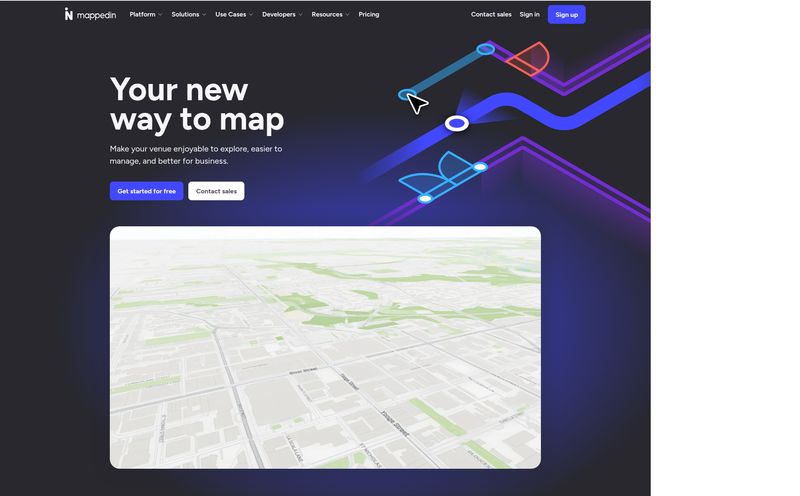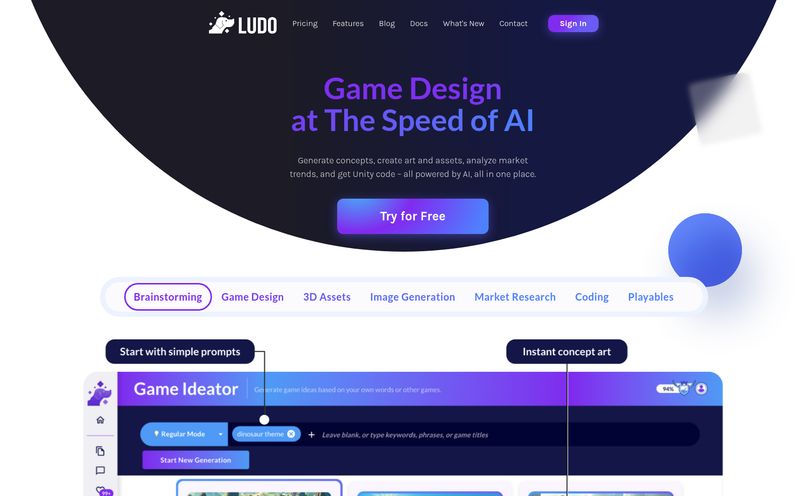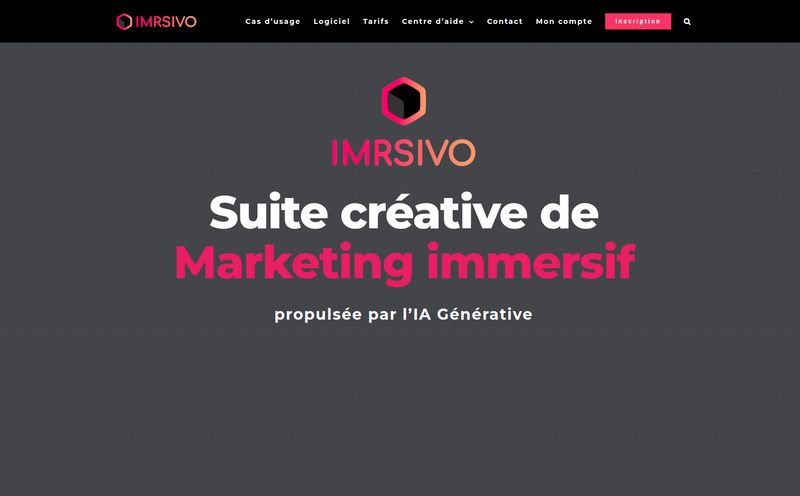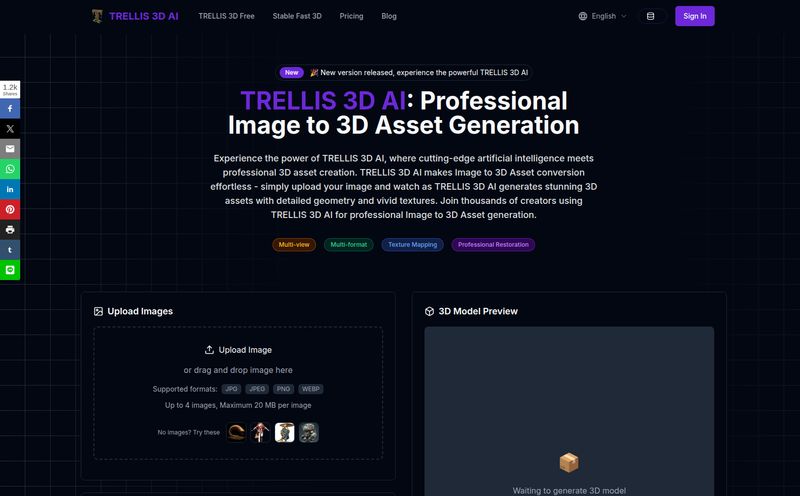I’ve been in the SEO and digital trends game for a while. Long enough to see countless “next big things” fizzle out. So when another AI tool lands on my desk, I’ll admit, my eyebrow does a little skeptical dance. We've all seen the wave of text-to-image generators like Midjourney and DALL-E completely change the game for visual content. It was only a matter of time before that same energy hit the third dimension. And that, my friends, is where DimensionLabs enters the chat.
The pitch is simple, almost deceptively so: type what you want, get a 3D model. Sounds like science fiction, right? I remember my first attempt at using Blender years ago. I think I spent three hours just trying to figure out how to properly shape a cube. It felt like learning a new language, one with a very unforgiving grammar. The idea of skipping that entire headache is… well, it’s incredibly appealing.
So What Is DimensionLabs, Really?
At its core, DimensionLabs is an AI platform designed to translate your words into physical form. You pop in a text prompt—and not just a simple one. The example they use on their site is a perfect illustration: “Design a chair in the shape of an avocado.” It's whimsical, specific, and something that would take a human designer a fair bit of time to conceptualize and model. DimensionLabs promises to generate a fully-fledged, 3D printable CAD model from that simple sentence.
This isn't just about creating pretty digital objects for a webpage. It's about generating actual blueprints for things you can hold in your hand. That's a fundamental shift. We're bridging the gap between imagination and fabrication, and the bridge is built of AI.

Visit DimensionLabs
The Experience of Creating with Words
Using the platform feels less like operating complex software and more like talking to a creative assistant. You're not wrestling with vertices, extrusions, or complex rendering settings. You're just... asking. This approach completely demolishes the technical barrier that has kept so many people out of the 3D creation space. If you can write an email, you can theoretically design a product. It's a wild thought.
This simplicity is where I see massive potential for traffic generation and content strategy. Imagine small e-commerce shops prototyping products in an afternoon. Or marketing agencies creating custom 3D assets for ad campaigns on the fly. The speed from idea to execution gets crunched from weeks to minutes. It’s a paradigm shift, and we're just seeing the first tremors.
My Honest Take: The Good, The Bad, and The AI
No tool is perfect, especially one that's this new and in beta. Let’s break down what I’m excited about, and what gives me pause.
The Upside of Instant Creation
The main advantage is staring us right in the face: speed and accessibility. This is huge. For hobbyists with a 3D printer, its a dream come true. No more scrolling through Thingiverse for hours hoping someone else has already designed the specific D&D miniature or custom hook you need. You can just ask for it.
For professionals, especially in product design, the ability to generate rapid prototypes is invaluable. Think about it. You could generate five completely different design concepts for a new water bottle before your morning coffee gets cold. This speed allows for a level of creative exploration that was previously way too expensive or time-consuming.
A Few Caveats to Consider
Alright, let's ground ourselves. The biggest con, and it’s a big one, is the very nature of AI itself. The results can be unpredictable. You’re putting your faith in the algorithm, and sometimes that algorithm has a… creative interpretation of your request. You might get exactly what you wanted, or you might get a bizarre, unusable mess. I've seen it with image generators, and 3D is even more complex. You have to be ready for some trial and error.
The other question mark is customization. What happens after the model is generated? The current information is a bit sparse on this. Can you tweak the dimensions? Refine the curves? Or is the first generation the final product? For a professional workflow, post-generation editing is crucial. My guess is this is something they're still working on, but its a critical point for anyone looking to use this for more than just fun.
Who is This Tool Really For?
I see a few key groups getting really excited about DimensionLabs.
- Product Designers & Innovators: As I mentioned, the rapid prototyping potential is off the charts. It's a way to fail faster and cheaper, which is how you get to a winning design.
- Hobbyists & 3D Printing Fans: This group might be the biggest winner. It opens up a world of custom creation without the steep learning curve of traditional software.
- Marketers & Content Creators: Need a unique 3D icon for a landing page? An asset for an AR filter? This is a fast, potentially cheap way to get it done without hiring a specialist 3D artist.
The All-Important Question: DimensionLabs Pricing
So, what's this magical tool going to cost? I put on my detective hat, went looking for the pricing page, and… ran straight into a 404 Not Found error.
Honestly, I wasn't even mad. That, combined with the prominent “Early Access” button on the homepage, tells a clear story. DimensionLabs is still in its beta phase. They're likely gathering user data, refining the AI, and figuring out what the heck to charge for it. For now, it seems like early access is the only way in, and it's probably free or very low cost for these initial users. This is a common strategy, and it’s a good sign they're focused on building the product before cashing in.
Frequently Asked Questions
What is DimensionLabs in simple terms?
It's a web-based AI tool that creates 3D models from text descriptions you type in. Think of it like a text-to-image generator, but for 3D objects.
Can I actually 3D print the models from DimensionLabs?
Yes, that's one of its main features. It's designed to create 3D printable CAD (Computer-Aided Design) models, so you can turn your ideas into physical objects.
Is DimensionLabs free to use right now?
It appears to be in an “Early Access” beta phase. While there's no public pricing, tools in this stage are often free or have a free trial for early users to test and provide feedback.
How is this different from software like Blender or Maya?
Traditional 3D software like Blender requires significant technical skill to manually build, sculpt, and texture models. DimensionLabs bypasses that manual process, generating a model for you based on a prompt. It trades granular control for incredible speed and ease of use.
Do I need any 3D modeling experience to use it?
Nope. That's the main appeal. If you can describe what you want in words, you can use DimensionLabs. It's built for beginners and experts alike.
What kind of files does it create?
While not explicitly stated, since it produces CAD models for 3D printing, it most likely exports in common formats like .STL, .OBJ, or .STEP, which are standard for most 3D printers and modeling software.
Final Thoughts on a New Dimension
Look, DimensionLabs is still a fledgling. It’s new, it’s in beta, and it has some kinks to work out. But I'm genuinely excited. I’ve seen enough tech to know a disruptive idea when I see one. Tools that democratize a complex skill set tend to have a massive impact.
This isn't about replacing talented 3D artists. It's about giving everyone else a paintbrush. It’s about empowering a new wave of creators who have the ideas but not the technical chops to bring them to life. DimensionLabs is one of the first to take a real crack at this for the 3D world, and I for one will be watching very, very closely. It’s worth signing up for early access just to be a part of what feels like the very beginning of something big.
Reference and Sources
- The official website for DimensionLabs can be found at a URL similar to `dimensionlabs.ai` (Note: The site is in beta and may change).
- For more on generative AI's impact, see articles from sources like MIT Technology Review.
- To see what people are creating with 3D printing, check out communities like Thingiverse.



